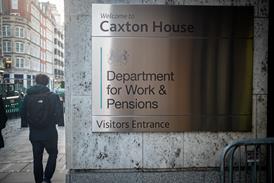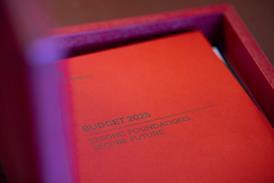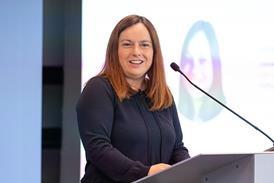After a five-year stint as chief executive of the Pensions Advisory Service, which ended in December 2018, Michelle Cracknell started as a non-executive director at Just Group on March 1.
This follows a clutch of top jobs: trustee director of Lloyds Banking Group Pensions; non-executive director at Fidelity International Holdings and PensionBee, as well as a trustee of Singing Gorilla Projects, a charity based in Uganda.
Modestly, she credits her late Royal Air Force father with her financial success: “I remember getting my first chequebook at the age of nine; he taught me to record how much I saved, how much I spent.”
The industry tells people to contribute more money into their pension, but it is obviously not an easy process as people constantly asked us how to do it
Michelle Cracknell, Just Group
After leaving Imperial College with an engineering degree – one of 10 girls in a class of 80 – Ms Cracknell ended up with a financial advice company. Because she had a science degree, she started doing calculations for her actuary boss.
Advice firm paved the way into pensions
After a couple of months, she thought: “I am not going to do this for the rest of my life and get him to sign the report,” so she successfully trained as an actuary.
She then spent 20 years as a director and part owner of an IFA, advisory and brokerage service: “You get to know the individuals really well as they bring you into their lives.”
Ms Cracknell’s company was eventually taken over by Aegon, where she became employee benefits director at Origen – the merged company resulting from the acquisition - followed by strategy director at Skandia, a consultancy job and ultimately the TPAS role.
Rare among pensions professionals, she has an acute understanding of consumer psychology, based partly on her time at TPAS.
Surprisingly, the second most frequent query from consumers was simply: “How can I put more money into my pension?”
She sometimes gets exasperated: “The industry tells people to contribute more money into their pension, but it is obviously not an easy process as people constantly asked us how to do it.”
Life is equally complicated at retirement, with questions on how to take benefits topping the query list every single year: ‘I need to take my benefits. How do I do it?’
According to Ms Cracknell, her starting point was: “Do you need to?”
She says: “People make the assumption when they receive their retirement pack that they have to go down this route. They don’t realise that they can defer taking their pension.”
Sub-optimal outcomes
By the end of this decade, defined contribution pensions will form the majority of most people’s retirement provision.
People latch on to the fact that they can take their pension from the age of 55 and they can take 25 per cent of it as a tax-free lump sum, Ms Cracknell notes.
“We need to make sure that taking benefits at the age of 55 doesn’t become the norm,” she warns.
Worryingly, “when it is within the pension wrapper, people don’t seem to feel that the pension is theirs, and therefore they transfer into a sub-optimal vehicle like a bank account when they could just leave it in the pension pot”.
What next for Ms Cracknell?
There can be few remaining ambitions for a woman who has achieved so much, but one came as a bolt out of the blue. She would like to be a Bond girl: “That’s me being a bit silly, but I do think the Bond girls need to get a bit older. I am a great [James] Bond fan.”
As the Bond film title goes: ‘Never say never again’.






















